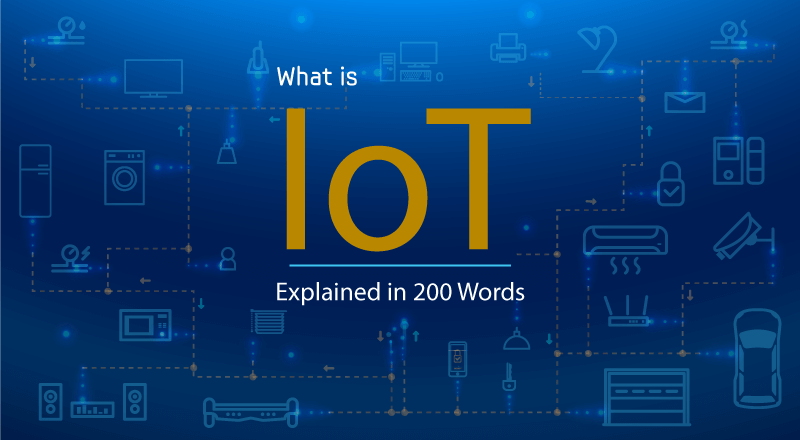

February 17, 2020
June 29th, 2023
The Internet of Things (IoT) is a network of physical objects which sense, and transfer data over the internet without human intervention.
Examples of IoT include driver-less cars, smart homes, wearables, smart cities, smart door locks, air quality sensors, etc.
The IoT depends on technologies like an application programming interface, sensors, Big Data, Predictive Analytics, AI, Machine Learning, Cloud, etc.
The success of connecting device depends upon access to storage and processing data.
Thus, companies working on IoT need to collect data from multiple sources and store it in the cloud network for further processing.

Advantages
Limitations
From machine’s performance to supply chain and logistic operations, IoT helps businesses to gain real-time insights.
IoT is used in industries like healthcare, automotive, finance, retail, manufacturing, etc.
The continuous growth of IoT helps businesses and people to work smarter and gain better control over things, making our lives better in many ways.
Thus, one can clearly see that IoT is used in diverse industry segments and has a promising future.
SPEC INDIA is your trusted partner for AI-driven software solutions, with proven expertise in digital transformation and innovative technology services. We deliver secure, reliable, and high-quality IT solutions to clients worldwide. As an ISO/IEC 27001:2022 certified company, we follow the highest standards for data security and quality. Our team applies proven project management methods, flexible engagement models, and modern infrastructure to deliver outstanding results. With skilled professionals and years of experience, we turn ideas into impactful solutions that drive business growth.
SPEC House, Parth Complex, Near Swastik Cross Roads, Navarangpura, Ahmedabad 380009, INDIA.
This website uses cookies to ensure you get the best experience on our website. Read Spec India’s Privacy Policy